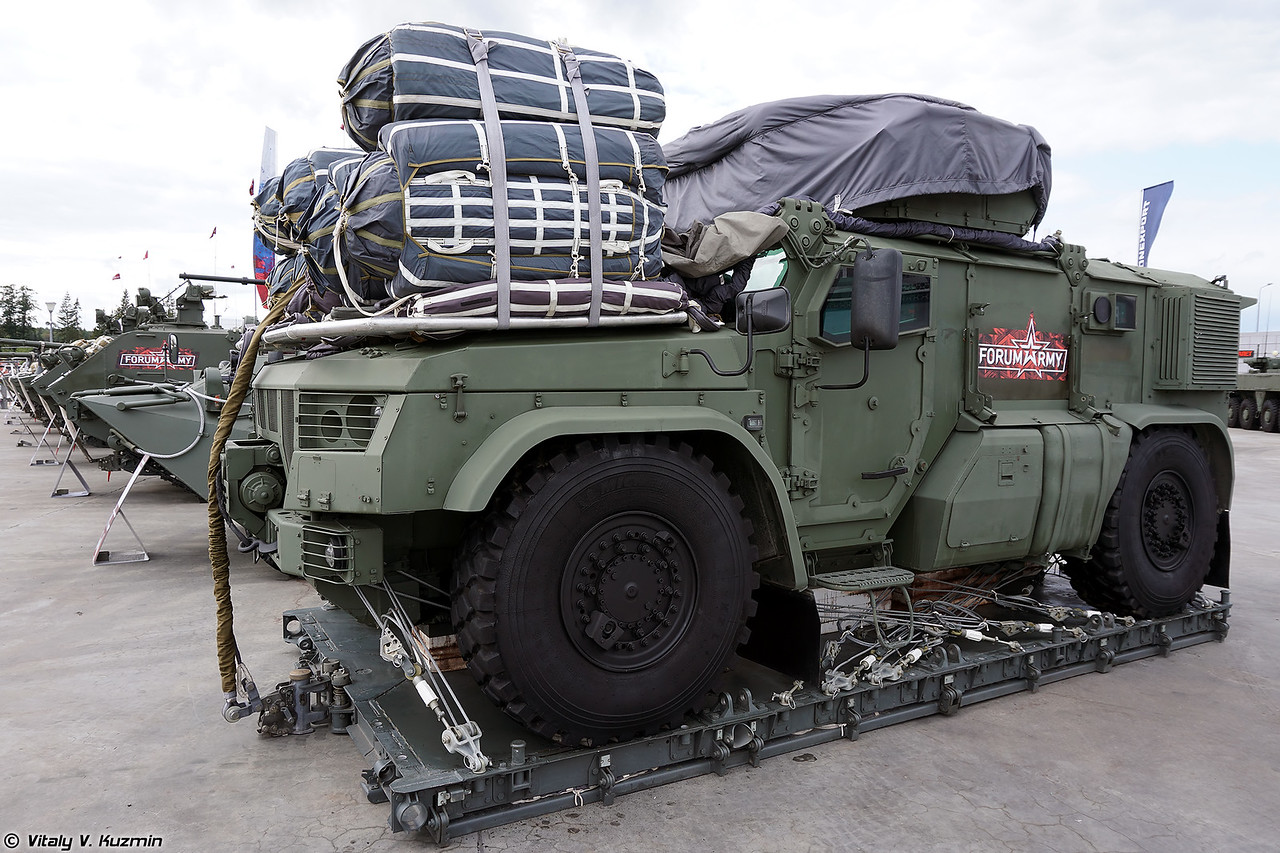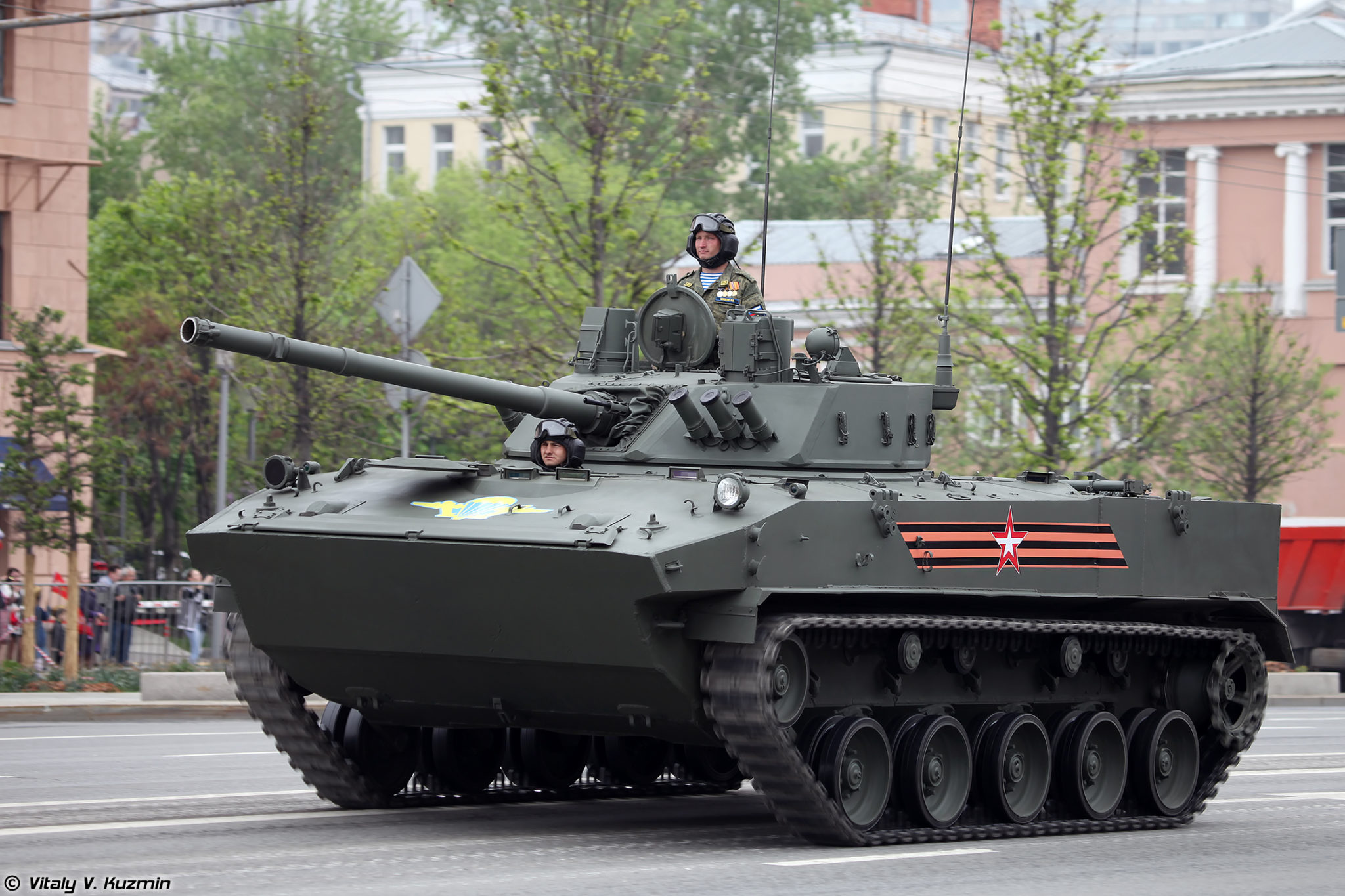
KAMAZ-4386 Typhoon-VDV rigged for air drop.
“The Ministry of Defense of the Russian Federation has made a fundamental decision to form a material-technical support (MTO) [logistics] brigade for the Airborne Troops.”
The accompanying excerpted article from the pro-Kremlin daily newspaper Izvestiya discusses Russian plans to establish the Russian Airborne Troops’ (VDV) first material-technical support (MTO) brigade. Currently, MTO brigades are only found in the Russian Ground Forces’ Combined Arms Armies and one Tank Army. According to the Izvestiya article, VDV operations in Syria, Kazakhstan, and presumably in Ukraine, have shown that the VDV requires a dedicated logistics formation (soyedineniye) to support the VDV’s unique needs for not only long-term combat operations and/or deployment abroad, but also peacekeeping operations.
Sources:
Roman Kretsul and Alexey Ramm, “Снаряд вне очереди: в ВДВ появится собственное тыловое соединение: В Воздушно-десантных войсках сформируют отдельную бригаду материально-технического обеспечения (Projectile out of turn: the Airborne Troops will have their own logistic formation: A separate logistics brigade will be formed in the Airborne Troops),” Izvestiya (Pro-Kremlin daily newspaper), 12 October 2022. https://iz.ru/1408667/roman-kretcul-aleksei-ramm/snariad-vne-ocheredi-v-vdv-poiavitsia-sobstvennoe-tylovoe-soedinenie
…The Ministry of Defense of the Russian Federation has made a fundamental decision to form a material-technical support (MTO) [logistics] brigade for the Airborne Troops. The organizational and staffing structure, composition and tasks of the formation are still being worked out, sources in the military department told Izvestia. The brigade will report directly to the Airborne Troops command, working in the interests of the paratroopers. Almost all the equipment of the formation will be able to land by airborne means, and some by parachute.
“In general, it is difficult to organize a system of interaction with the regular structures of logistic support, subordinate to the Deputy Minister of Defense for Logistics,” said Colonel Alexander Perendzhiev, Associate Professor at the Plekhanov Russian University of Economics. – As they say, “the convoys are late.” And the Airborne Troops move very quickly, and so it is necessary that the “wagons” keep up with them. I think that this is shown from not only the experience of Syria, but also CSTO [Collective Security Treaty Organization] operations at the beginning of the year in Kazakhstan, where paratroopers formed the basis of Russian forces. “the usual logistic services do not act quickly enough, because they are not paratroopers,” said Alexander Perendzhiev. – They can supply motorized rifle and tank units. But the Airborne Troops are special, rapid reaction forces. Today the winner is the one who builds a more effective system of combat and logistics support. Much depends on the delivery of shells, cartridges, grenades, and the ability to quickly repair damaged equipment…
In January of this year, at the request of the government of Kazakhstan, peacekeeping forces of the CSTO countries arrived in the unrest-ridden republic. The Russian contingent was represented by the Airborne Forces. All units, together with equipment, were transferred to the airfield near Alma-Ata within one or two days by Il-76 military transport aircraft. After the situation stabilized, units of Russia and other countries participating in the treaty left this state just as quickly. This was the first experience in history of the real use of the CSTO forces.
The operational transfer of troops to one direction or another and the organization of their supply are also being actively worked out during the exercises of the countries of the Shanghai Cooperation Organization. So, last year, near Orenburg, in the rear of a mock enemy, helicopter landings were landed, which cut off the path to retreat. During the maneuvers, the “militants” were squeezed out of the border…
Image Information:
Image: KAMAZ-4386 Typhoon-VDV rigged for air drop
Source: https://www.vitalykuzmin.net/Military/ARMY-2021-Static-part-2/i-Px9gHXf/A
Attribution: CCA-4.0

